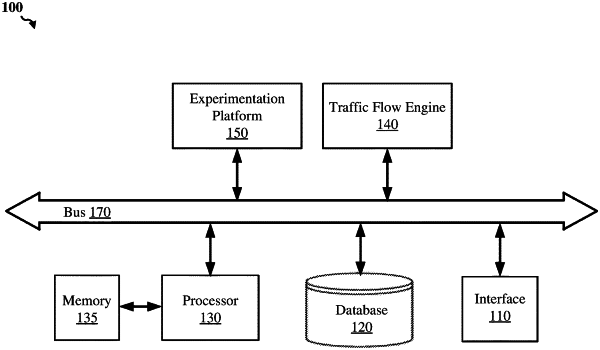| CPC H04L 41/5041 (2013.01) [G06F 11/3438 (2013.01); G06F 11/3442 (2013.01); G06F 11/3668 (2013.01); G06N 20/00 (2019.01); G06N 7/01 (2023.01); H04W 28/02 (2013.01)] | 20 Claims |

|
1. A computer-implemented method for controlling traffic flow for software experimentation, comprising:
receiving a first traffic from a first plurality of users, wherein each user of the first plurality of users is to receive an existing feature or one of one or more new features in response to receiving the first traffic;
determining, from the first traffic, a first portion of the first plurality of users to receive the existing feature, wherein the first portion is to be bounded by one or more of a first lower threshold or a first upper threshold;
determining, from the first traffic, a second portion of the first plurality of users to receive a first feature of the one or more new features, wherein the second portion is to be bounded by one or more of a second lower threshold or a second upper threshold;
providing the existing feature to the first portion of the first plurality of users;
providing the first feature to the second portion of the first plurality of users;
receiving feedback from the first plurality of users in response to providing the existing feature and the first feature;
generating a user sentiment from the feedback;
adjusting one or more of the first portion or the second portion to increase the user sentiment based on a next feedback, wherein:
the first portion is to remain bounded by one or more of the first lower threshold or the first upper threshold;
the second portion is to remain bounded by one or more of the second lower threshold or the second upper threshold; and
a machine learning model using a multi-arm bandit (MAB) solution adjusts the one or more of the first portion or the second portion and bounds the first portion and the second portion;
receiving a second traffic from a second plurality of users, wherein each user of the second plurality of users is to receive the existing feature or one of the one or more new features in response to receiving the second traffic; and
providing one or more of:
the existing feature to an adjusted first portion of the second plurality of users; or
the first feature to an adjusted second portion of the second plurality of users.
|